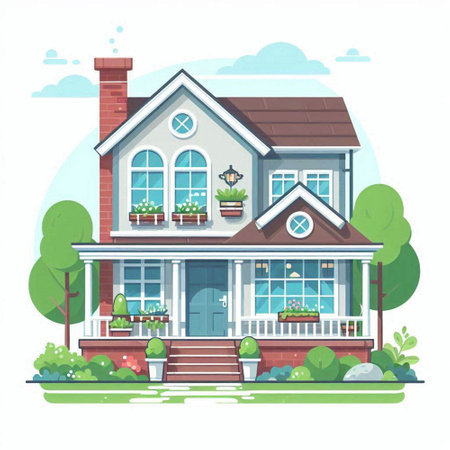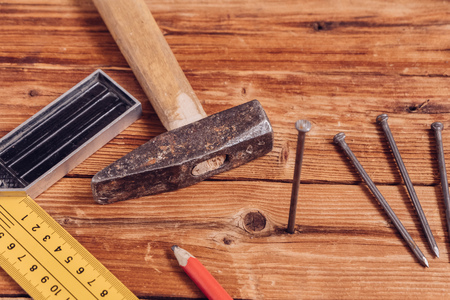1. Understanding the Appeal of Recycled Materials
Incorporating recycled materials into your home decor isn’t just a trend—it’s a smart and meaningful way to make your living space more sustainable while staying stylish. In the U.S., there’s growing interest in eco-conscious living, and using recycled materials is one of the most accessible ways to participate in that movement without compromising on aesthetics.
The Environmental Benefits
Recycled materials help reduce waste, conserve natural resources, and lower carbon emissions. When you choose items made from reclaimed wood, repurposed metal, or recycled glass, you’re contributing to a circular economy that minimizes landfill use and reduces the need for new raw materials. This supports cleaner air and water, less energy consumption, and an overall healthier environment.
The Economic Advantages
Using recycled decor can also be budget-friendly. Many upcycled or secondhand items cost less than brand-new versions while offering unique character and charm. Plus, DIY projects using reclaimed materials can save money and give you complete control over your home’s look.
| Benefit | Description |
|---|---|
| Environmental Impact | Reduces landfill waste and conserves natural resources |
| Energy Efficiency | Lowers energy usage by reducing demand for new material production |
| Cost Savings | Saves money through thrift shopping and DIY reuse projects |
| Aesthetic Value | Adds unique character with vintage or handmade appeal |
Sustainability Meets Modern Lifestyle Trends
Todays American homeowners are increasingly drawn to interiors that tell a story—and what better story than one of creativity and sustainability? From industrial lofts in New York City to cozy craftsman homes in Portland, integrating recycled elements fits seamlessly with popular design styles like rustic modern, boho chic, or farmhouse. Choosing eco-friendly decor doesn’t mean sacrificing style—it means enhancing it with purpose.
The Cultural Shift Toward Conscious Living
Younger generations especially are driving demand for sustainable living options. Whether its through shopping at local vintage stores, reusing family heirlooms, or supporting artisans who work with reclaimed materials, Americans are embracing the idea that good design should be both beautiful and responsible.
A Win-Win Approach
Merging style with sustainability allows you to create a home that reflects your values while staying on-trend. By understanding the benefits of recycled materials, youre already taking the first step toward more mindful decorating choices.
2. Choosing the Right Recycled Materials
Picking the right recycled materials is key to keeping your home stylish while staying eco-friendly. The good news? You don’t have to settle for anything that looks worn out or outdated. From rustic charm to modern minimalism, there are plenty of options that blend sustainability with great design.
Reclaimed Wood: Warmth and Character
Reclaimed wood is salvaged from old barns, factories, or even shipping pallets. It adds instant character and warmth to any room—perfect for farmhouse, industrial, or boho styles. Look for pieces with unique grain patterns or weathered textures to make a statement in furniture, shelving, or accent walls.
Repurposed Metal: Industrial and Sleek
Old pipes, sheet metal, or iron fixtures can be transformed into one-of-a-kind decor pieces like light fixtures, coffee tables, or wall art. Repurposed metal works especially well in urban lofts or spaces with an industrial edge. A little sanding and sealing can give it a polished look without losing its cool factor.
Vintage Fabrics: Soft Touches with History
Think about using vintage fabrics from old curtains, clothes, or linens to create throw pillows, cushion covers, or framed textile art. These fabrics often come with bold patterns or timeless textures that add personality and charm to your space. Plus, theyre perfect for eclectic, shabby chic, or mid-century modern interiors.
Recycled Glass: Bright and Elegant
From colorful bottles turned into vases to recycled glass tiles used in backsplashes or bathroom accents—glass is both sustainable and stylish. Its reflective surface helps brighten up rooms and adds a touch of elegance whether youre going coastal, contemporary, or classic.
Quick Guide: Matching Recycled Materials to Design Styles
| Material | Best For | Design Style Match |
|---|---|---|
| Reclaimed Wood | Furniture, walls, shelves | Rustic, Farmhouse, Boho |
| Repurposed Metal | Lamps, tables, wall decor | Industrial, Urban Loft |
| Vintage Fabrics | Pillows, upholstery, textile art | Eclectic, Mid-Century Modern |
| Recycled Glass | Tiling, vases, lighting accents | Coastal, Contemporary |
The key is to mix these materials thoughtfully so they complement your existing decor. With the right choices, recycled materials can enhance your homes style while doing good for the planet.

3. Blending Old with New for a Seamless Look
Incorporating recycled materials into your home decor doesnt mean giving up on a modern, stylish interior. In fact, mixing old and new elements can create a unique and inviting space that reflects personality and creativity. The key is to strike the right balance between vintage charm and contemporary design.
Mix Textures for Visual Interest
Combining different textures is one of the easiest ways to blend recycled pieces with modern decor. For example, pair a reclaimed wood coffee table with a sleek leather sofa or add a vintage metal light fixture over a minimalist kitchen island. These contrasts help each element stand out while working together harmoniously.
Stick to a Cohesive Color Palette
To avoid visual clutter, choose a color palette that complements both your recycled and modern items. Whether you prefer neutral tones or bold colors, consistency in your palette helps unify the space. You can repaint or refinish salvaged furniture to better match your existing decor.
Example Color Combinations:
| Style | Main Colors | Recycled Material Suggestions |
|---|---|---|
| Modern Farmhouse | White, Gray, Warm Wood Tones | Barn wood shelves, antique milk jugs as vases |
| Industrial Chic | Black, Charcoal, Rustic Browns | Reclaimed metal piping, distressed wood coffee tables |
| Scandinavian Minimalist | Soft Neutrals, Light Wood, White | Pallet wood wall art, vintage ceramic planters |
Create Focal Points with Recycled Pieces
Select one or two standout recycled items to serve as conversation starters. A refurbished dresser can become a bathroom vanity or an old window frame can be turned into a mirror. These focal points add character without overwhelming the room.
Layer Accessories Thoughtfully
Add smaller recycled accents like vintage books, glass jars, or fabric remnants in moderation. Mix them with modern accessories such as geometric vases or LED lighting for a balanced look. Grouping items in odd numbers (like sets of three) often feels more natural and visually pleasing.
Quick Tips for Blending Styles:
- Avoid overcrowding — give each piece room to breathe.
- Edit your collection — not everything needs to be displayed at once.
- Add greenery — plants help soften transitions between styles.
The beauty of blending old and new lies in the storytelling it brings to your home. With thoughtful placement and a little creativity, recycled materials can elevate your decor while staying stylish and fresh.
4. DIY Décor Projects Using Recycled Items
Looking to add personality and style to your home while staying eco-conscious? DIY décor projects using recycled materials are a fun, affordable way to upgrade your space. These projects not only help reduce waste but also let you create one-of-a-kind pieces that reflect your personal taste—all while aligning with American design trends like farmhouse chic, modern rustic, or coastal casual.
Repurposed Mason Jar Organizers
Mason jars are a staple in many American homes and can easily be turned into stylish organizers. Mount them on reclaimed wood for a farmhouse-inspired bathroom storage rack or use them as pendant lights in the kitchen. Add paint or twine for extra charm.
Upcycled Pallet Wall Art
Wooden pallets are often discarded after shipping but can be transformed into rustic wall art. Sand them down, stain or paint them, and stencil on quotes, maps, or simple geometric designs. Its an easy project that brings character to any room.
Wine Bottle Vases and Lighting
Instead of tossing empty wine bottles, turn them into decorative vases or ambient lighting. Cut the bottoms off to create candle holders or use fairy lights inside for a glowing effect perfect for patios or dining rooms.
DIY Project Ideas At a Glance
| Item | Recycled Material | Project Idea | Style Match |
|---|---|---|---|
| Mason Jars | Glass jars from groceries | Wall-mounted organizers or lights | Farmhouse, Vintage |
| Wood Pallets | Shipping pallets | Wall art or headboards | Rustic, Industrial |
| Wine Bottles | Empty glass bottles | Candle holders or light fixtures | Modern, Boho |
| Tin Cans | Canned food containers | Pencil holders or planters | Cottagecore, Eclectic |
Tips for Stylish Upcycling at Home
- Keep it cohesive: Use similar colors and textures throughout your space to make upcycled items blend seamlessly.
- Add modern touches: Combine old materials with sleek hardware or minimalist finishes for a balanced look.
- Personalize: Customize with paint, stencils, or fabric to match your existing décor style.
Get Inspired and Start Creating!
You don’t need to be a professional designer to give your home a fresh look using recycled materials. With just a few basic tools and some creativity, you can craft beautiful, sustainable pieces that feel right at home in any American-style interior.
5. Where to Find High-Quality Recycled Materials
Finding stylish, reliable recycled materials for your home decor project doesn’t have to be a challenge. Across the U.S., there are numerous sources that offer both character and quality—perfect for incorporating sustainability into your space without compromising on design. Below are some of the most popular and trustworthy places to explore:
Local Salvage Yards and Architectural Reuse Centers
These are treasure troves for one-of-a-kind finds. Local salvage yards often carry reclaimed wood, vintage fixtures, antique doors, and unique hardware—all at affordable prices. Architectural reuse centers, such as Habitat for Humanity ReStores, offer everything from lighting and cabinetry to tiles and countertops.
Benefits:
- Eco-friendly shopping
- Support local businesses or non-profits
- Access to rare and vintage items
Online Marketplaces
If you prefer shopping from home, online platforms make it easy to browse recycled materials by category, style, or condition. These marketplaces often include seller ratings and detailed product descriptions to help you make informed choices.
| Platform | What You Can Find | Best For |
|---|---|---|
| Facebook Marketplace | Furniture, décor accents, building materials | Local pickups and budget-friendly deals |
| Craigslist | Lumber, windows, doors, appliances | Bargain hunters and bulk items |
| Etsy (Vintage Section) | Upcycled art, furniture, textiles | Unique handmade or vintage pieces |
| The Freecycle Network | Diverse range of free items | Sustainability-focused decorators on a tight budget |
Specialty Eco-Friendly Retailers
Certain companies specialize in sustainable home goods made from recycled content. Brands like TerraCycle and Green Demolitions focus on salvaged high-end kitchen cabinetry, countertops, and bathroom fixtures.
Tip:
If youre looking for consistency in color or texture—especially for large projects like flooring or wall treatments—these specialty retailers might be your best bet.
Your Own Home or Neighborhood
You might already have hidden gems in your garage or attic—think old wooden crates, unused furniture parts, or leftover tiles. Don’t forget to check with neighbors during community clean-up days or yard sales. One persons trash can be another’s statement piece!
6. Maintaining Style and Durability Over Time
Incorporating recycled materials into your home decor is a great way to stay eco-friendly and unique, but it’s important to ensure those pieces continue to look great and serve their purpose for years. With the right care and placement, you can keep your recycled decor stylish and functional without extra effort.
Understand Material-Specific Care
Different recycled materials require different maintenance. For example, reclaimed wood needs regular sealing to prevent cracking or warping, while metal pieces might need protection from rust. Knowing what your pieces are made of helps you take the right steps to preserve them.
Common Recycled Materials and Their Care Needs
| Material | Common Uses | Care Tips |
|---|---|---|
| Reclaimed Wood | Shelves, tables, wall panels | Seal every 1–2 years; avoid direct sunlight and moisture |
| Recycled Metal | Lamps, frames, art pieces | Clean with a dry cloth; use rust-preventive spray if needed |
| Recycled Glass | Vases, tiles, light fixtures | Wipe with glass cleaner; handle carefully to prevent chipping |
| Upcycled Fabrics | Cushions, curtains, upholstery | Vacuum regularly; spot-clean stains promptly |
Smart Placement for Longevity
Avoid placing delicate or vulnerable recycled items in high-traffic areas where they can easily be damaged. For example, a vintage mirror with a reclaimed wood frame might do better in a hallway than in a busy kitchen.
Rotate Decor Seasonally
If youre using smaller decor accents like upcycled vases or textile art, consider rotating them out seasonally. This not only refreshes your space but also helps prevent wear and tear from constant use or exposure.
Combine Old with New Thoughtfully
You don’t have to stick entirely to recycled pieces. Mixing them with new elements can balance the overall look while protecting older items from overuse. For example:
Styling Example:
- Living Room: Pair a reclaimed wood coffee table with a modern sofa.
- Bedroom: Add an upcycled fabric throw pillow on a new bedspread.
- Kitchen: Use recycled glass tiles as a backsplash paired with contemporary cabinetry.
Regular Checkups Keep Decor Looking Fresh
A quick monthly check can help catch any damage early—whether it’s a loose screw on a repurposed chair or fading fabric on reused cushions. Staying proactive keeps your space beautiful and safe.
Caring for your recycled home decor doesn’t have to be complicated. With a little attention and smart styling, these one-of-a-kind pieces can stay looking great and serving their purpose for many years.


